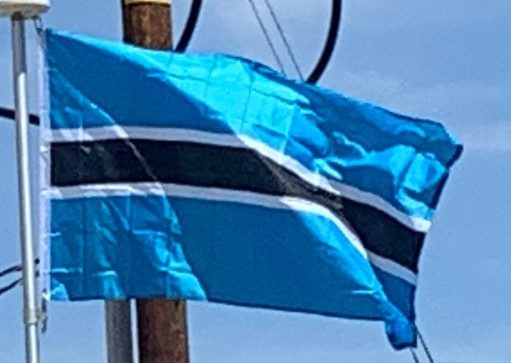The mineral industry provides about 40% of all government revenues. In 2007, significant quantities of uranium were discovered, and mining was projected to begin by 2010. Several international mining corporations have established regional headquarters in Botswana, and prospected for diamonds, gold, uranium, copper, and even oil, many coming back with positive results. Government announced in early 2009 that they would try to shift their economic dependence on diamonds, over serious concern that diamonds are predicted to dry out in Botswana over the next twenty years.
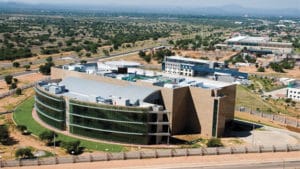
Botswana’s Orapa mine is the largest diamond mine in the world in terms of value and quantity of carats produced annually. Estimated to have produced over 11 million carats in 2013, with an average price of $145/carat, the Orapa mine was estimated to produce over $1.6 billion worth of diamonds in 2013.
Tourism, concentrated in the wildlife rich Okavango Delta is an increasingly important source of income for Botswana.
Transportation:
Botswana has 603 miles of rail lines, 11,484 miles of roads, and 92 airports, of which 12 have paved runways.
The engineered paved road network has almost entirely been constructed since independence in 1966.
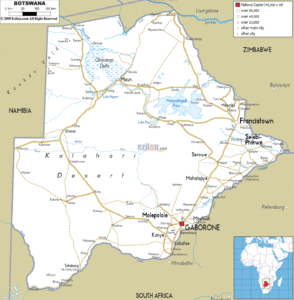
The national airline is Air Botswana, which flies domestically to four airports as well as internationally to South Africa, Zambia, and Zimbabwe. The four major airports with scheduled service are: Sir Seretse Khama International Airport in Gaborone, Francistown Airport, Kasane Airport, and Maun Airport. Maun Airport is particularly critical to the tourism infrastructure due to its proximity to the Okavango Delta.
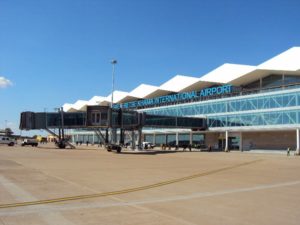
Botswana Railways is the national railways company forms a crucial link in the Southern African regional railway systems. Botswana Railways offers rail-based transport logistics solutions to move a range of commodities for the mining sector and primary industries, passenger trains services and dry ports.
Flag of Botswana:
The national flag of Botswana consists of a light blue field cut horizontally in the center by a black stripe with a thin white frame. Adopted in 1966 to replace the Union Jack, it has been the flag of the Republic of Botswana since the country gained independence that year. It is one of the few African flags that utilities neither the colors of the Pan-Africanist movement nor the colors of the country’s leading political party.
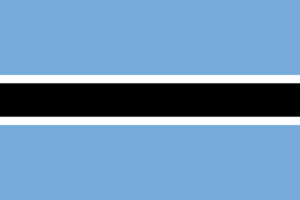
Before it gained independence, Botswana did not have its own distinctive colonial flag, with the flag of the United Kingdom serving as the de facto flag of the protectorate. When Botswana’s national flag was created in 1966, it was symbolically designed to contrast with the flag of South Africa, since the latter country was ruled under an apartheid regime. Hence, the black stripe with the white frame came to epitomize the peace and harmony between the people of African and European descent who reside in Botswana. The new flag was first hoisted at midnight on 30 September 1966, the day Botswana became an independent country.
